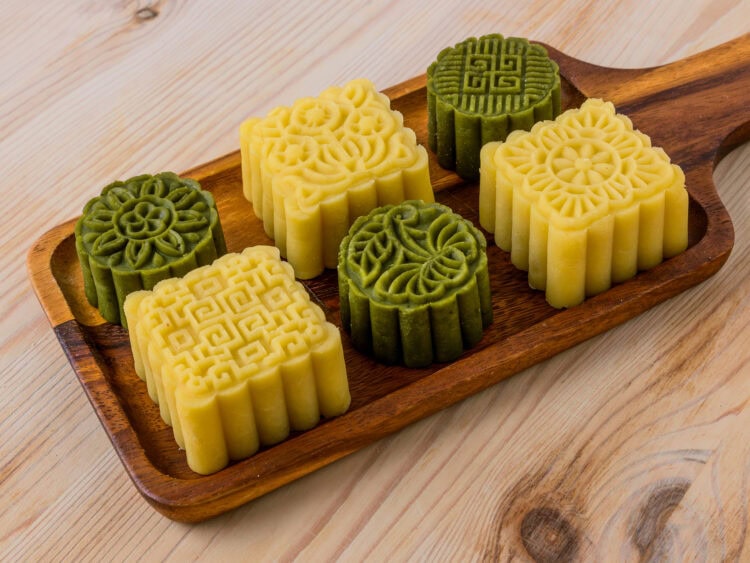A delicious mooncake recipe with just a few ingredients
Mooncakes are delicious. And the best part is, there are so many different kinds, each more delicious than the last. Last year, I shared a traditional mooncake recipe for the Mid-Autumn Festival. This year, I wanted to show you another recipe that’s just as tasty.
Technically, even though these mung bean cakes look like mooncakes (especially since they’re shaped with a mooncake mold), they’re not traditional Chinese cuisine mooncakes.
Traditional southern Chinese mooncakes are baked pastries with a thin outer crust, filled with bean paste and one or two salted egg yolks inside.
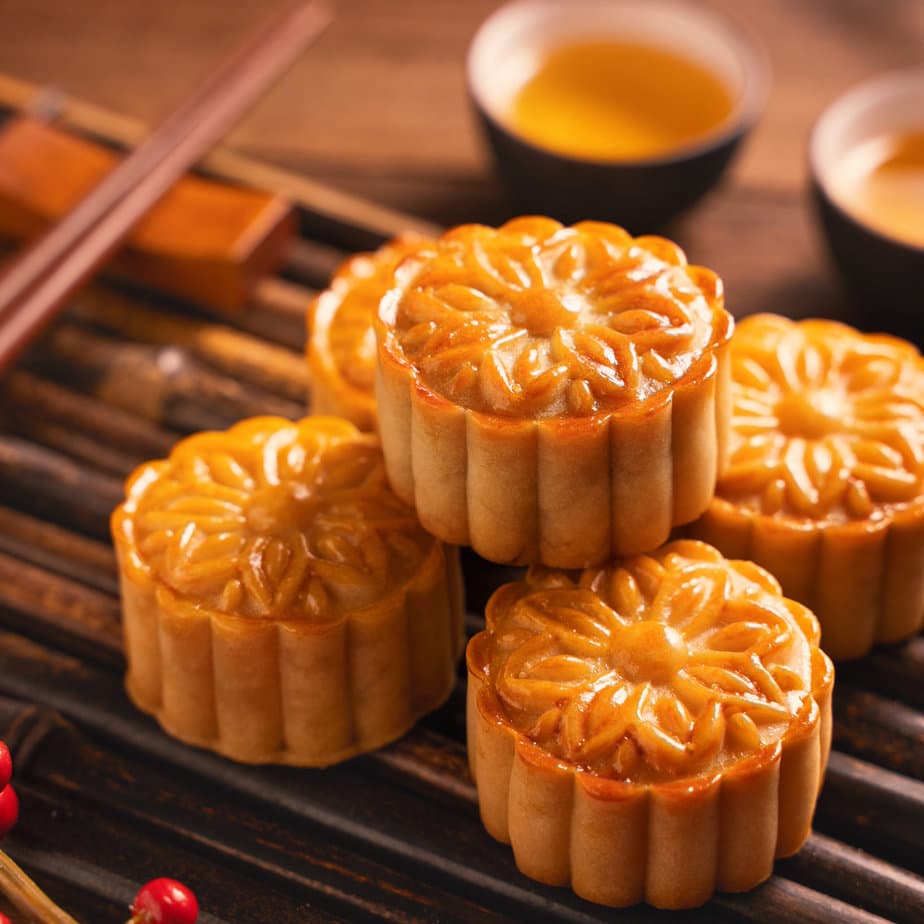
Different variations of mung bean mooncakes
The great thing here is that you can really have fun! Today, we’re going for the pure pleasure of a big, delicious block of cake that melts in your mouth as you eat it. One plain, the other with matcha.
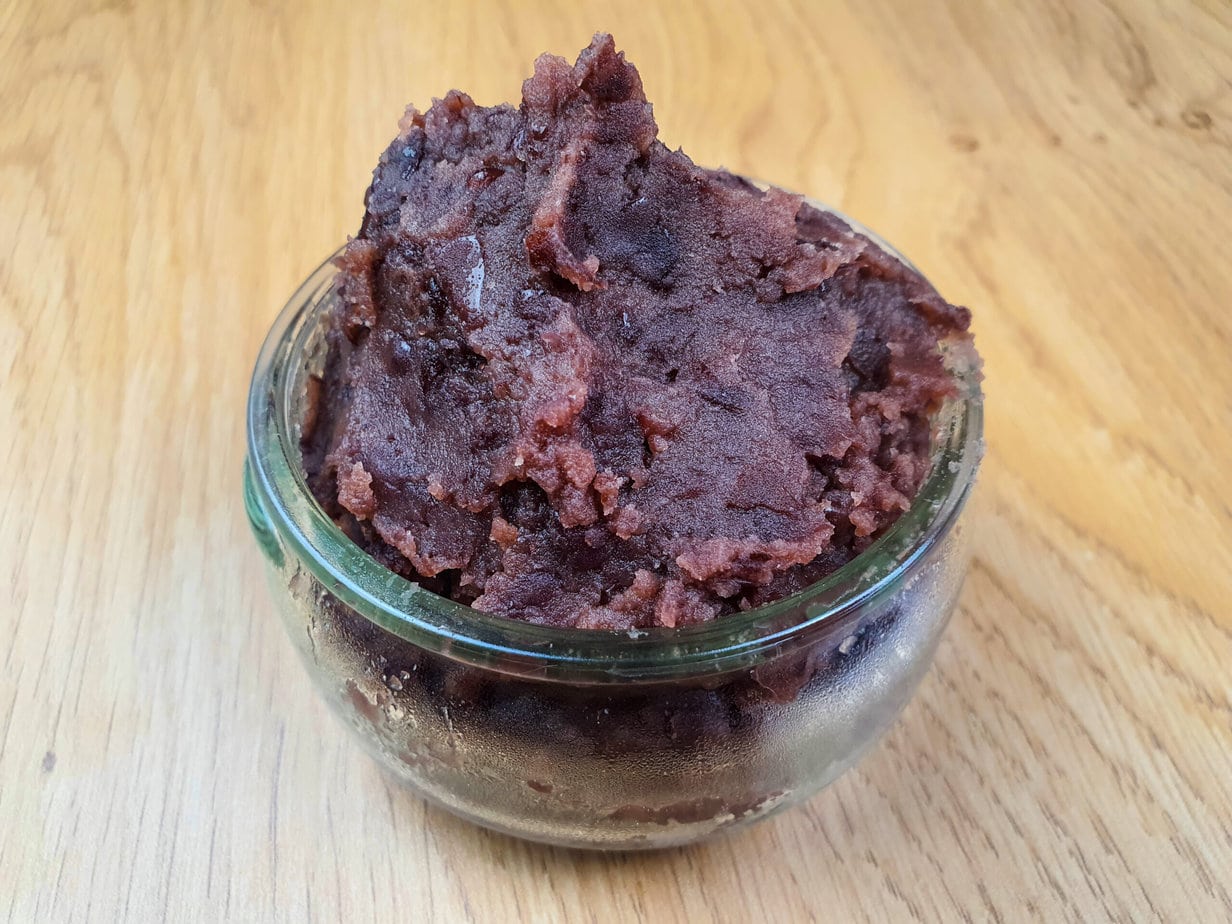
But you can also use red bean paste, black sesame paste (thick), lotus paste, pandan… the only limit is your taste and imagination.
The main ingredients in this recipe
Yellow beans: also called mung dal (like in dal bhat), we’ll turn them into a delicious, creamy yellow bean paste
Butter: it might seem unusual in Asian cooking, but trust me, it adds a wonderful creaminess
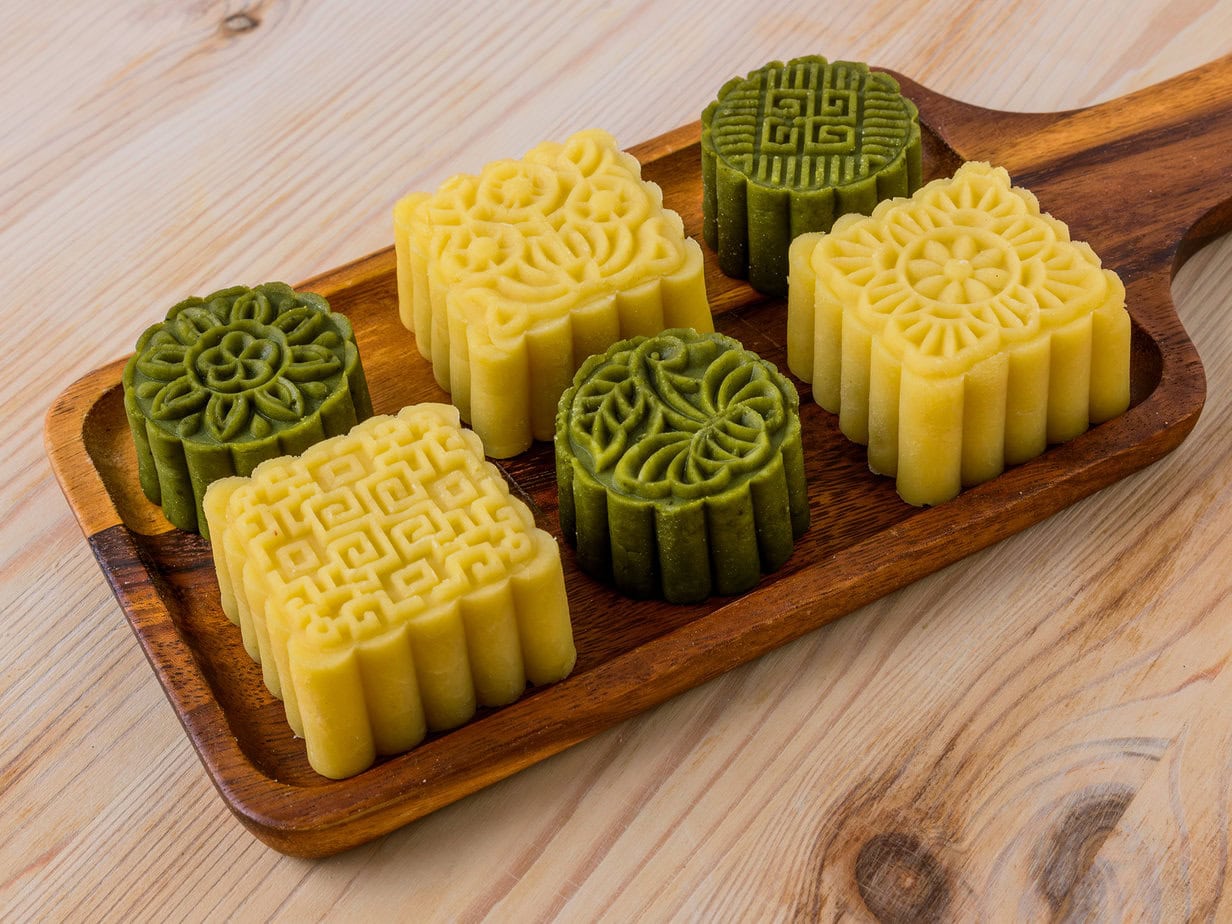
Equipment
Ingredients
- 200 g hulled mung beans moong dal
- 375 ml water
- 55 g butter unsalted
- 100 g sugar
- 65 g honey
- 0.25 teaspoon salt
- matcha powder for coloring
Instructions
Preparing the mung beans
- Rinse the mung beans until the water runs clear.200 g hulled mung beans
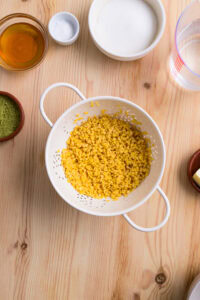
- Add water to the mung beans and soak for at least 4 hours, preferably overnight.375 ml water
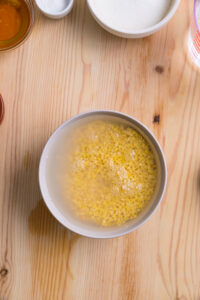
- Rinse the beans under running water and drain well. Transfer the soaked beans to a nonstick saucepan. Add just enough water to cover.
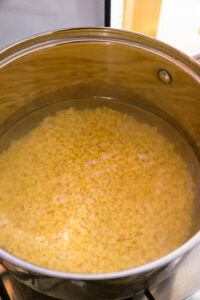
Cooking the mung beans
- Set the saucepan over medium heat and bring the beans to a boil. As soon as it begins to bubble, cover and reduce the heat to very low.
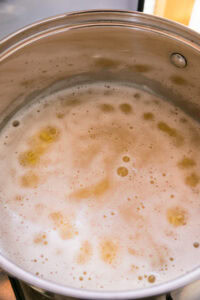
- Simmer for about 20 minutes, until the beans are cooked and tender.

Making the mung bean paste
- Remove from the heat and mash the cooked beans with a spatula until smooth. Alternatively, blend in a blender for convenience.
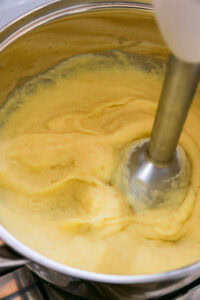
- Add the sugar, honey, salt, and butter.55 g butter, 100 g sugar, 65 g honey, 0.25 teaspoon salt
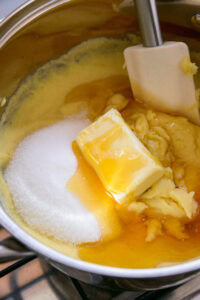
- Return the saucepan to medium-low heat and stir until the butter melts and the sugar and honey dissolve. As the butter melts, the paste will loosen.
- As the moisture evaporates, the paste thickens and pulls away from the bottom of the pan. Continue stirring until the paste follows the motion of the spatula but still clings to it slightly.

- Reduce the heat to the lowest setting to prevent the paste from burning. Continue cooking, stirring, until the paste is thick enough that it no longer sticks to the spatula. At this stage, the paste resembles modeling clay.
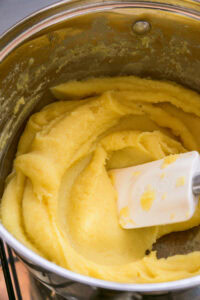
Coloring and cooling
- Transfer the paste to a bowl and divide it into two portions. Add matcha powder to one portion to color it. Mix well, pressing the paste with a spatula.matcha powder
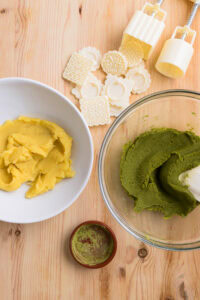
- Let both portions cool until lukewarm. Cover the surface of the paste to prevent a skin from forming.
Shaping the mooncakes
- When the paste is lukewarm, divide each portion into five equal parts, about 50 g each. Roll each portion between your hands to form a ball. Cover the balls with plastic wrap to keep them from drying out.
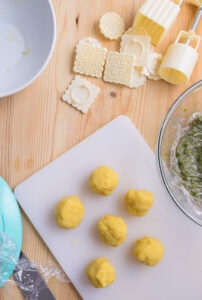
- Shape the mooncakes with a mooncake mold. Roll each ball of paste into an elongated cylinder with the palms of your hands. Gently place the paste into the mold and set the mold on a flat surface.
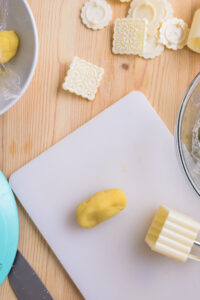
- Gently press the handle to imprint the design. Press until it stops, then lift the handle to release the mooncake.

- Repeat with the remaining balls of paste. It's important to mold the mooncakes while the paste is still warm but not hot.
Notes
Nutrition
Recipe sources
For this recipe, I used the one from the “Huang Kitchen” blog
